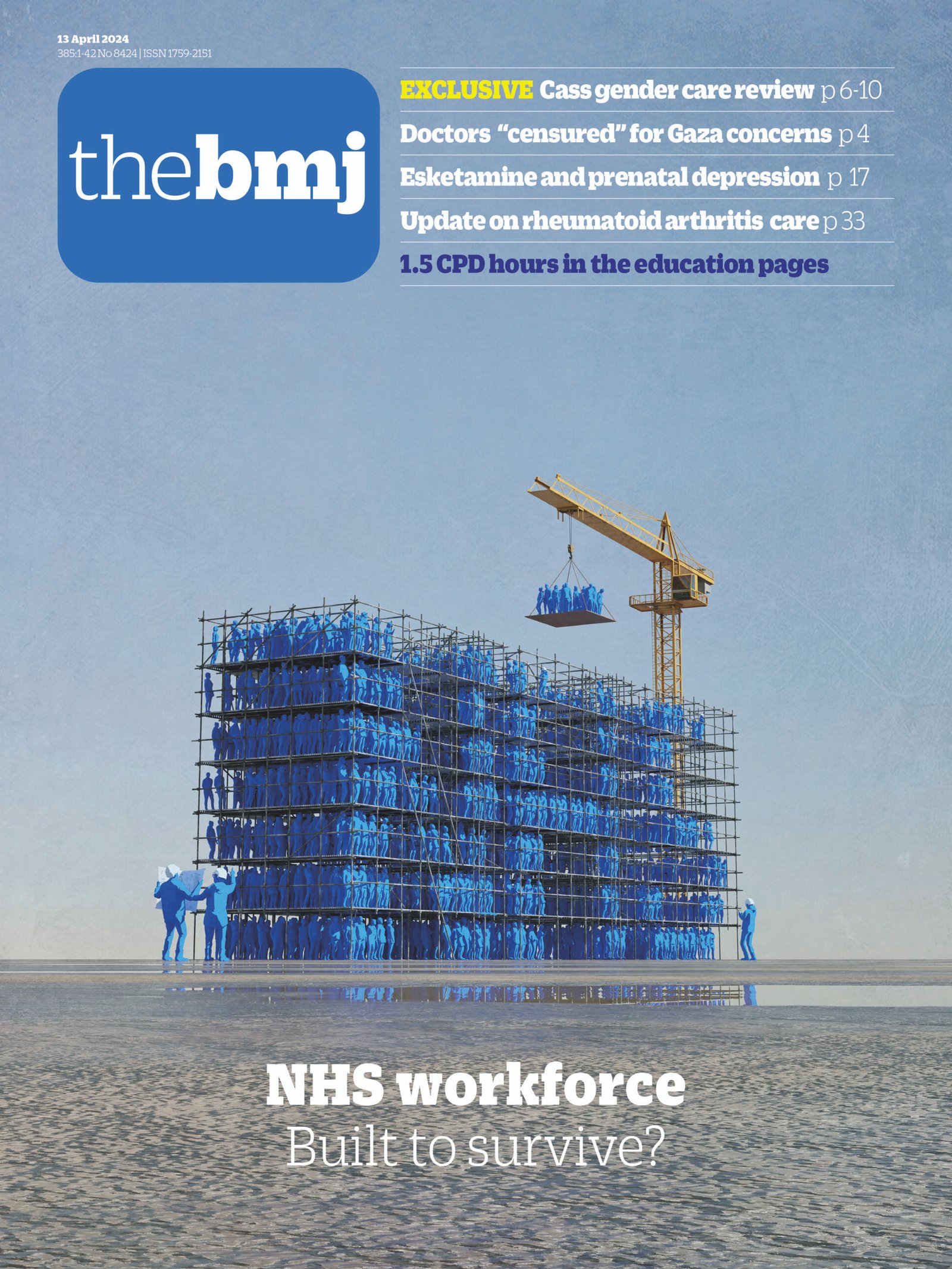Lunchtime yoga, mindfulness seminars and resilience training are just some of the ways big companies try to promote well-being at work. But one British researcher says he’s failed to find “any evidence” these programs actually help workers.
“[I found] no difference between those who participated in these types of initiatives and those who didn’t,” said William Fleming, author of a study published this month in Industrial Relations Journal and a research fellow at the Wellbeing Research Centre at the University of Oxford.
Fleming examined data from 46,336 workers at 233 companies, collected as part of Britain’s Healthiest Workplace survey in 2017 and 2018. Those companies offered employees a range of 90 different well-being programs, which Fleming said included “stress and resilience training, mindfulness, time management training, relaxation classes.”

Rather than tracking workers before and after a well-being program, Fleming created “pairs” of similar workers: one who had taken part in a program, one who hadn’t. The pairs were made up of workers from the same organizations and their survey results indicated they shared similar work environments and stressors.
The results suggest that those who took part in well-being programs “appear no better off” than those who didn’t.
An entire industry has grown around corporate wellness in recent years, as companies invest in programs to improve employee well-being, and perhaps increase productivity. Research suggests the corporate wellness market in Canada was worth more than $3 billion in 2022, while globally it could grow to be worth $120 billion by 2032.
In this week’s edition of our Workday series we are talking to registered psychologists, Holly Whyte and Krista Bruyer, about burnout. They tell us which symptoms to watch for and some steps on how to avoid burning out.
Scrutinizing ‘wellness’
Research into these programs has produced varied results. A 2019 study followed 33,000 workers at a U.S. retail chain, who were offered in-person advice on nutrition, physical activities and stress reduction. Medical tests done 18 months later did not show any statistically significant changes.
By contrast, a 2022 study looked at 1,132 U.S. workers with access to an employer-sponsored mental health program, including self-guided digital content and in-person psychotherapy. Over three years, more than two-thirds of workers showed a reduction in depression and anxiety. The study’s conclusion suggested “an employer-sponsored workplace mental health program was associated with large clinical effect sizes for employees and positive financial ROI [return on investment] for employers.”
Fleming told CBC Radio’s The Current that his own study led him to conclude that well-being initiatives often aren’t engaging with the root causes of work stress. He thinks companies need to focus on things like pay, workload and what autonomy employees have over how, when and where they work.
(He noted one exception: employees cited well-being benefits when employers allowed volunteering on company time, such as pro bono work or an activity like painting a community centre.)
It creates this illusion that, ‘Hey, all this stuff we’re doing is not working.’ But that’s not actually accurate.– Bill Howatt
Some researchers have pointed out the study takes a broad look at what workers are offered and doesn’t differentiate between various wellness programs and what they involve.
Critics also noted that subjects were polled at a single point in time, rather than evaluating these programs over time.
Human resources expert Bill Howatt said many of the programs included in the study are like “random acts of wellness,” rather than more thorough initiatives that include follow-up and evaluation.
“It creates this illusion that, ‘Hey, all this stuff we’re doing is not working.’ But that’s not actually accurate. It’s not what we’re doing, it’s how we’re doing it that’s a problem,” said Howatt, founder of Howatt HR, an Ottawa-based human resources firm focused on psychological health and safety.
Howatt worries that organizations may look at the study and conclude wellness programs are a waste of time, but argues Fleming’s work could spark a conversation that more evidence is needed.
“This could create curiosity that maybe we need to do more research on how to have these programs work,” he said.
‘Not set up to be equitable’
Chantaie Allick used to work at a large Toronto tech company that offered several wellness programs, but says that as a Black woman, she never felt they were designed with people like her in mind.
“I know other women of colour who sort of hesitated [to participate], because we are taught you’re supposed to be focused on work at work, and you go to work to work,” said Allick, 38, who is based in Toronto. “Taking advantage of some of those programs, there’s … guilt involved. There’s a level of privilege that some folks have and others don’t.”

That hesitation was tied to Allick feeling like she had to work twice as hard to succeed, but she thinks being at an earlier point in her career was also an obstacle. She recalled watching more experienced employees taking advantage of programs offered, while younger employees had to stay focused on work because they were trying to prove themselves and move up the ladder.
“It’s not set up to be equitable from the outset, much less help people,” she said.
Howatt said that organizations should involve diverse and marginalized demographics in wellness programs from the beginning. Initiatives should be designed through an intersectional lens of the “different filters [people use] to interpret the world,” such as age, race, gender, neurodivergence and language proficiency, he said.
Organizations could also adopt a “less is more” approach, he suggested.
“I’ll come into a large organization and they have like 93 different programs. So no one knows about the programs because they haven’t had any time [to investigate],” he said. “You have people who are working through lunch.”
The pandemic dramatically altered the dynamic between employees and employers, with workers wielding big demands and shuffling to new jobs in record numbers. But as the commutes return and the economy cools, how has the power shifted?
Those companies could benefit from focusing on some key initiatives and making sure employees know where and how to access them, he said.
Allick left her job and took time to recover from burnout she experienced in 2021. The following year, she co-founded Re-Work, an organization that helps people redefine their relationship to wellness in the office.
She said that many companies bill these programs as efforts to improve employee happiness, but “it’s almost always about productivity, it’s about offering things that first will keep you at the office longer.”
A healthy bottom line
Analysis from Deloitte Insights published in 2019 found that companies with effective mental health programs created a return on investment (ROI) of $1.62 Cdn for every $1 spent. That return is driven by increased productivity, including fewer days of work missed for mental health reasons, the study said.

Organizational psychologist Jennifer Dimoff said ROI is one reason companies have gotten “on the wellness bandwagon” in recent years.
“It’s hard not to be cynical about the motivations of organizational leaders, but I think a lot of it just comes down to really a lack of understanding of fit,” said Dimoff, who teaches at the Telfer School of Management at the University of Ottawa. “What the business leaders might think employees need, and what they actually need, are two different things.”
Having worked with several organizations on their workplace problems, she said most really want to improve employee well-being, and aren’t just ticking a box. She thinks wellness programs have potential to help.
Howatt thinks organizations should avoid what he calls “activities,” such as one-off seminars, and focus on initiatives that help employees form healthier habits.
He recommends what he calls a “plan, do, check, act” model. That approach involves planning an intervention based on the needs of the workforce; implementing that program and ensuring it’s accessible to all; checking in with workers over time to see what effect it’s having; and acting on those findings, and adjusting the intervention as needed.
“When you’re trying to do these programs, it’s not just to give people information, it’s to create habits,” he said.
Allick said the biggest thing any organization can do is to “take the burden off the individual” and look at mental health issues like burnout “as a systemic problem.”
“The companies that are going to win are the ones that are actually making … real structural changes, doing the hard work,” she said.
Audio produced by Alison Masemann and Dawna Dingwall. This story is part of The Current’s new series Well Founded, which digs into the wellness industry and how to make sense of all the pitches on how to be a better you.





.jpg?crop=1.777xh:h;*,*&downsize=510px:*510w)





